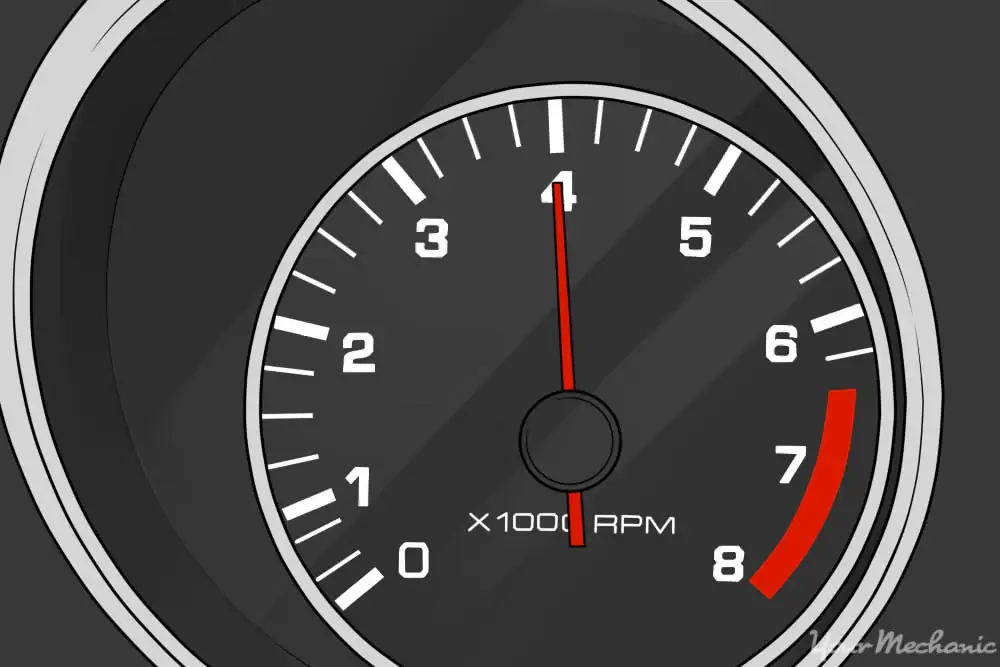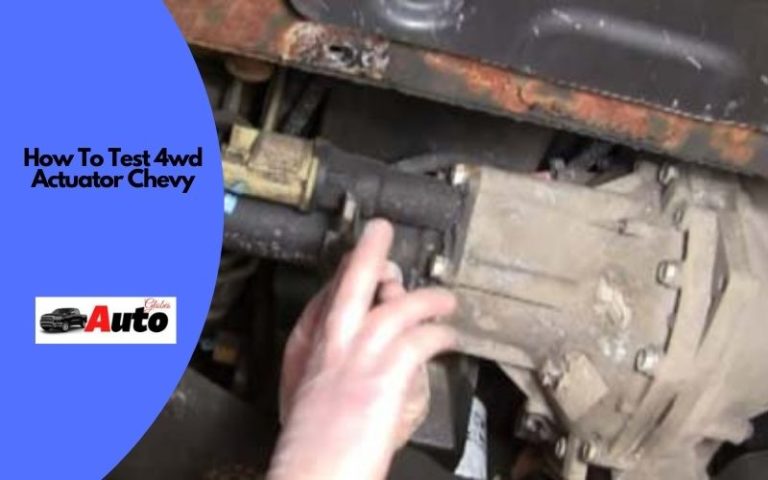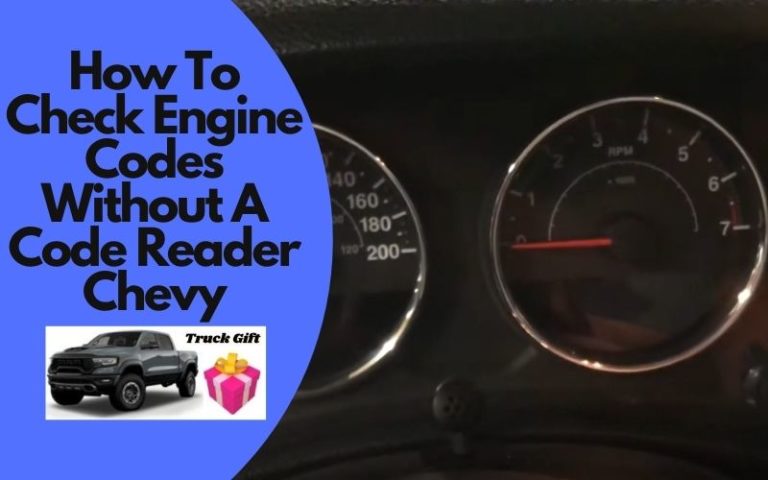What RPM Should My Car Be At Different MPH? Answered!
You can improve fuel efficiency by understanding the proper RPM for your vehicle at different speeds. It can also alert you to potential problems with your engine or transmission.
So, you may ask, “what RPM should my car be at different MPH?”.
For most vehicles, the ideal RPM range while driving at any highway speed is between 1,500 and 3,000 RPM. During city driving, it’s generally best to stay in the 1,500 to 2,000 RPM range. However, it’s important to know the details of your engine’s size, power, transmission, and gearbox rotation to calculate the most accurate RPM recommendations.
In this article, we will discuss the ideal RPM range for different speeds and show you how to calculate optimal RPM while driving.
What RPM Should My Car Be At Different MPH?
Knowing what RPM your car should be at different MPH is a bit complex. That’s because it depends on the size, power, fuel, gear ratio, and other components. So, to make the calculation a bit easier, here is a chart to help you determine your RPM based on speed.
In the chart, the RPM has been calculated using the gear ratio, tire diameter, and vehicle speed. The gear ratio and the tire diameter vary depending on the make and model of the car.
| Speed | 8-speed gas engine | 6-speed gas engine |
| 40 MPH | 1925 RPM (2nd gear) | 2719 RPM (1st gear)/1554 RPM (2nd gear) |
| 50 MPH | 2406 RPM (2nd gear)/1645 RPM (3rd gear) | 1942 RPM (2nd gear) |
| 60 MPH | 1974 RPM (3rd gear)/3048 RPM (2nd gear) | 2331 RPM (2nd gear)/ 1524 RPM (3rd gear) |
| 70 MPH | 2303 RPM (3rd gear)/ 1880 RPM (4th gear) | 1778 RPM (3rd gear) |
| 80 MPH | 2066 RPM (4th gear)/ 2632 RPM (3rd gear) | 2032 RPM (3rd gear)/1524 RPM (4th gear) |
| 90 MPH | 2325 RPM (4th gear)/ 1958 RPM (5th gear) | 2286 RPM (3rd gear)/ 1714 RPM (4th gear) |
| 100 MPH | 2176 RPM (5th gear)/ 2583 RPM (4th gear) | 1905 RPM (4th gear)/ 2540 RPM (3rd gear)/1550 RPM (5th gear) |
| 110 MPH | 2394 RPM (5th gear)/ 1946 RPM (6th gear) | 2095 RPM (4th gear)/1705 RPM (5th gear) |
| 120 MPH | 2123 RPM (6th gear)/ 2611 RPM (5th gear) | 1860 RPM (5th gear)/2286 (4th gear)/1546 RPM (6th gear) |
| 140 MPH | 2477 RPM (6th gear)/2031 RPM (7th gear) | 1752 RPM (6th gear)/2170 RPM (5th gear)/2667 RPM (4th gear) |
| 150 MPH | 2654 RPM (6th gear)/2176 RPM (7th gear) | 2325 RPM (5th gear)/1933 RPM (6th gear) |
| 160 MPH | 2831 RPM (6th gear)/2321 RPM (7th gear) | 2062 RPM (6th gear)/2480 RPM (5th gear) |
| 170 MPH | 2075 RPM (8th gear)/2466 RPM (7th gear) | N/A |
| 180 MPH | 2197 RPM (8th gear)/2611 RPM | N/A |
Here, we have used a 2023 Lexus RC with an 8-speed gas engine and a 2023 Honda Civic with a 6-speed gas engine to get a basic idea of the RPM range.

Also, we have only used gas engine data because most sedan cars use gasoline as fuel. The wheel diameter of the Lexus RC is 19 inches, and the Honda Civic has an 18-inch wheel diameter.
What RPM Should My Car Be At 40 MPH?
To utilize the full potential of your vehicle, you can go up to 3000 RPM without putting stress on your engine. Before that, changing your gear would be ideal.
So, at 40 mph, your car should be in second gear. Based on that, your car’s RPM should be approximately between 1500-2000 at 40 MPH.
What Is The Normal RPM For 50 MPH?
It would be ideal to drive your car in either 2nd or 3rd gear at this speed. If you are driving in 2nd gear, your RPMs would be in the 2000-2500 range. But if you’re driving in third gear, it should be 1500-2000.
What Is The Normal RPM For 60 MPH?
For 8-speed engines, driving at 60 mph in second gear would take your RPMs close to 3000. On the other hand, if you are driving at third, it should stay within 2000.
For a 6-speed engine, however, driving in third gear would keep the RPMs close to 1500, and in second, they should not cross 2500.
What Is The Normal RPM For 70 MPH?
70 mph is definitely a 3rd or 4th gear speed. For 6-speed engines, the normal RPM should be between 1500 and 2000. In 8-speed engines, the RPM range needs to be from 1800-2500.
What Is The Normal RPM For 80 MPH?
The optimal RPM range for 80 mph is from 1500-2500. Now, in 8-speed engines, the RPM range should be between 2000-2500. And, the range is 1500-2000 for 6-speed engines.
What Is The Normal RPM For 90 MPH?
In 8-speed engines, the RPM should be between 2000-2500 based on the gear, which should be either fourth or fifth. In a 6-speed engine, the RPM should be between 1500-2000, in either third or fourth gear.
What Is The Normal RPM For 100 MPH?
Going over 100 mph requires your 8-speed engine to be at about 2000 RPM in 5th gear and 2500 in 4th.
In the 6-speed engine, for the same amount of speed, the RPM is around 1500 in 5th gear and 2000 in 4th.
What Is The Normal RPM For 110 MPH?
Your 8-speed engine needs about 2000 RPMs in 5th gear and 2500 in 4th gear to achieve 110 mph.
For the same speed in a 6-speed engine, the RPM is around 1500 in 5th gear and 2000 in 4th.
What Is The Normal RPM For 120 MPH?
To hit 110 mph, your 8-speed engine needs 2100 RPMs in fifth gear and 2600 in fourth.
If you’re running a 6-speed engine at the same speed, the RPM in the 5th gear is around 1800, while in the 4th gear, it’s around 2500.
So, from the discussion, you should be able to infer that the RPM of your engine will completely depend on how you are using your gear. Based on that, your optimum RPM at any speed should be from 1500-2500 in each gear.
Remember not to drive at idle RPM for a longer period, which is around 1000-1500 in most cars. Also, try not to go over 3500 RPM for too long as it might stress your engine. Putting your engine under stress may cause engine failure.
As a result, the vehicle may shut down immediately after starting.
Factors That Affect RPM of Different Vehicles at Different MPH
Now that you’ve seen the different RPMs at different speeds, it’s important to know some working factors behind them. You see, RPM at different speeds depends on a lot of factors, that’s why it’s not the same for all vehicles.
A normal range of RPM when accelerating should be between 1500-3000. The normal RPM when accelerating is a range. That’s because you will be increasing your speed each second, which means your car’s RPM will increase too.
With that, you will also need to shift the gear, which will again decrease the RPM. And this process will be repeated as long as you are driving.

So, let’s briefly review the important factors that affect RPM.
The Size and Power of the Engine:
A smaller and lower horsepower engine will have more RPMs than a larger and higher horsepower engine for the same speed and acceleration.
That’s because a smaller and lower HP engine’s crankshaft will have to rotate more to get the same amount of speed and acceleration.
Engine Gear Ratio:
Your engine’s RPM will largely depend on your gear ratio. A gear ratio refers to the ratio between the teeth of the driven and driver gears. A higher gear ratio would mean higher RPM in your car.
Number of Cylinders:
The higher the number of cylinders in an engine, the more power it can produce. That means it can reach more speed at a lower RPM. In other words, the RPM limit is higher in such engines.
Also, if you have a VCT system, you should not drive with the VCT solenoid unplugged. That’s because it optimizes the engine’s performance based on RPM.
Fuel Type:
The RPM of your engine will also depend on what type of fuel it uses. Fuels have a compression ratio; this indicates the capacity of the air-fuel mixture that compresses the piston.
Diesel typically has a higher compression ratio than gasoline. It means diesel engines have higher RPMs than gas engines.
Tire Diameter:
At a given speed, a larger tire diameter will result in lower RPM, while a smaller tire diameter will result in higher RPM. Because the circumference of the tire, which is the distance traveled in one revolution, is directly related to the tire’s diameter.
To summarize, while you are accelerating, your speed will constantly increase. That means your engine RPM will also continuously increase. The RPM will decrease a bit when you shift gears.
If your car doesn’t accelerate but RPM goes up, you should get your car checked.
How to Calculate RPM for Your Car?
By now, you should have gotten the fact that the ideal RPM of your car depends on so many things. So, it would be best for you if you could calculate the ideal RPM for your car based on its accurate specifications.
The good news is that RPM calculation is very simple, and you can calculate the ideal RPM based on any given speed.
To calculate the RPM of your engine, you will need to know the car’s gear ratio, tire diameter, and speed at which you are driving.
The formula for calculating the RPM is, RPM = Wheels RPM × Gear ratio Now, the wheel RPM = (63360 x Speed of Car) / (Tire Diameter x ℼ x 60)
Where:
- Vehicle Speed is the speed of the vehicle in miles per hour (mph)
- Gear Ratio is the ratio of the number of teeth on the drive sprocket to the number of teeth on the driven sprocket
- Tire Diameter is the diameter of the tire in inches
- Pi (π) is the mathematical constant approximately equal to 3.14159
- 60 is for converting hour to minutes
- 63360 is to convert inches into miles
If you are not into math, there are some web apps that will help you calculate the RPM as long as you provide the necessary information.
Frequently Asked Questions (FAQs)
What is the purpose of monitoring RPM?
The purpose of monitoring RPM (revolutions per minute) is to ensure that your vehicle is operating at an optimal level. Maintaining the proper RPM for your vehicle can help improve fuel efficiency, and prevent wear and tear on your engine and transmission. And, alert you to potential problems with your vehicle.
Is it harmful to drive with a high RPM?
Driving at a consistently high RPM can cause excessive wear and tear on your engine and transmission and may also lead to reduced fuel efficiency. It’s generally best to stay within the recommended RPM range for your specific make and model, as indicated in the owner’s manual.
What should I do if my RPM is consistently too high or too low?
You can change your idle RPM if your RPM is consistently too low. High RPM can mean a faulty throttle position sensor, a sticking accelerator pedal, or a malfunctioning fuel pump. See a mechanic if your RPM is consistently high.
Conclusion
Understanding what RPM should your car be at different MPH is crucial for maintaining optimal performance and fuel efficiency. Your car will run smoothly and efficiently if you pay attention to your RPM and follow the recommendations in your owner’s manual.
Moreover, it’s equally important to monitor your RPM for any unusual fluctuations. That’s because it can be a sign of a problem with your vehicle. You can keep track of your car’s RPM to ensure it runs smoothly and detect any potential issues early.



![How To Replace ABS Sensor Chevy Silverado? [5 Easy Steps]](https://truckguidepro.com/wp-content/uploads/2021/08/How-To-Replace-ABS-Sensor-Chevy-Silverado-768x480.jpg)

